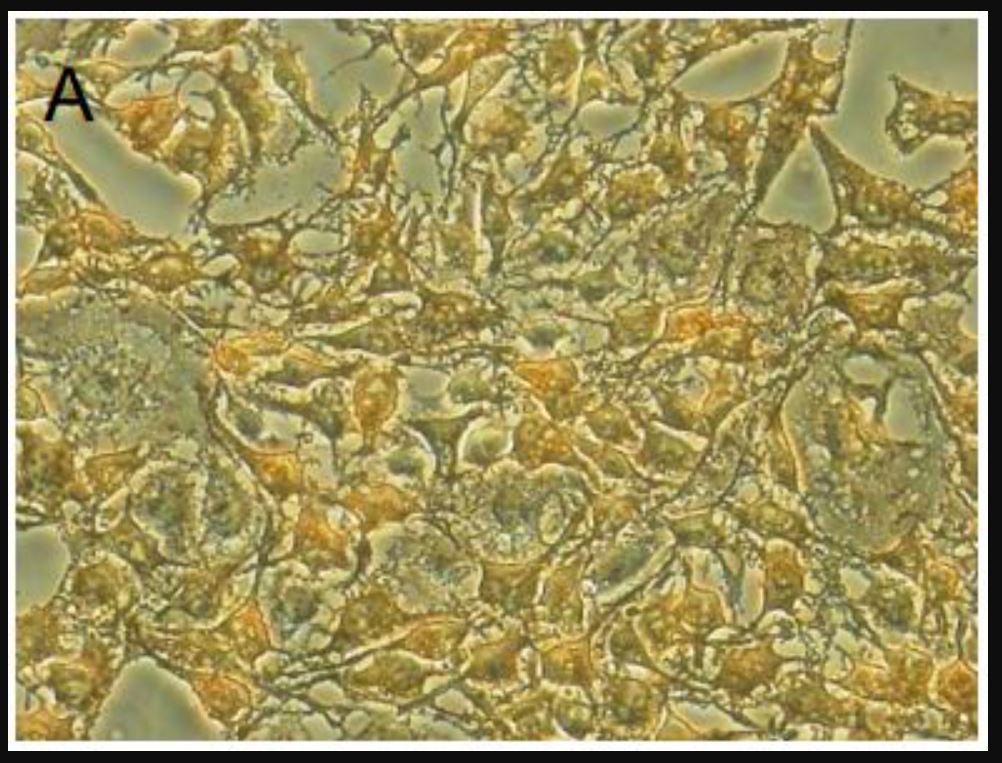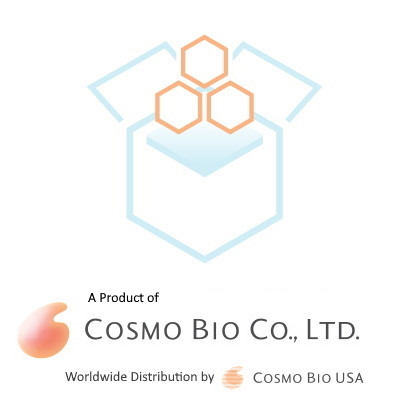
GIST-T1 Cell Line
PMC-GIST01C
CategoryCell lines
Product group Cell Culture
Overview
- SupplierCosmo Bio USA
- Product NameGIST-T1 Cell Line
- Delivery Days Customer16
- CertificationResearch Use Only
- Scientific DescriptionHuman Cell Line GIST-T1 Cells, cryopreserved : 1.0x106 cells / 1vial Not included: GIST-T1 Cell Culture Media (PMC-GISTM) or GIST-T1 Cell Culture Media (without antibiotics) (PMC-GISTMA) Please use either of the recommended media (PMC-GISTM/PMC-GISTMA) for the culture of GIST-T1. Using media other than whats recommended will NOT be under the warranty. Precautions: Because of cells derived from human tissue, please always wear gloves and safety glasses when working them. Remove the cryovial from the dry ice packaging and immediately place into liquid nitrogen storage until use. Based on the license agreement of Techno network Shikoku and Kochi University, GIST-T1 cell is prohibited to provide (distribution, lending, transfer, licnsing, ets.) to a third party. Cosmo Bio CANNOT guarantee the cells cryopreserved in customers laboratory. Background Gastrointestinal stromal tumors (GISTs) are one of the submucosal tumor, occur in the stomach, the small intestine and the esophagus, unlike most gastrointestinal tumors. GISTs are considered to arise from the interstitial cells of Cajal, the pacemaker cells of the gut. The GIST-T1 is a cell line derived from GISTs of the stomach in a Japanese woman and established by Takahiro Taguchi; associate professor, Graduate School of Integrated Arts and Sciences, Kochi-University, Kochi, Japan. Gastrointestinal stromal tumors (GISTs) are one of the submucosal tumors which occur in the stomach, the small intestine and the esophagus, unlike most gastrointestinal tumors. GISTs are considered to arise from the interstitial cells of Cajal and the pacemaker cells of the gut. GIST-T1 is a cell line derived from GISTs of the stomach of a Japanese woman and was established by Takahiro Taguchi; associate professor, Graduate School of Integrated Arts and Sciences, Kochi-University, Kochi, Japan. Specifications Culture Medium components: DMEM, FBS, antibiotic, etc. Precautions .Because cells are derived from human tissue, please always wear gloves and safety glasses when working with them. .Remove the cryovial from the dry ice packaging and immediately place into liquid nitrogen storage until use. .Based on the license agreement of Techno network Shikoku and Kochi University, GIST-T1 cell is prohibited to provide (distribution, lending, transfer, licnsing, ets.) to a third party. Experimental example NOTE:Please use the recommended media (Cat.no# PMC-GISTM-COS) for the culture of GIST-T1. Using media other than whats recommended will NOT be under the warranty. NOTE:Cosmo Bio CANNOT guarantee the cells cryopreserved in customers laboratory. Protocol A) Thawing of Cells 1) Prepare a 100mm dish (Note: 100mm dish is recommended). 2) Warm culture medium to 37°C. 3) Prepare a conical tube (for 15mL) added 10mL of culture medium. 4) Carefully remove the cryovial from liquid nitrogen and thaw cells in a water bath at 37°C for 90 seconds. 5) Transfer the cryovial into a laminar flow hood. Before opening, wipe the outside of the vial with 70% ethanol. 6) Gently transfer the thawed cell suspension (1mL) into 10 mL of culture medium. 7) Transfer 1mL of culture medium in the same conical tube back to the cryovial and pour the contents back to 15mL conical tube. 8) Centrifuge the cell suspension at approximately 200 xg for 5 minutes at 4°C. 9) Aspirate the supernatant without disrupting the pellet and resuspend the cells in 10mL of culture medium. 10) Transfer the cell suspension to 100mm dish and incubate the cells in 37°C, 5% CO2 incubator. 11) Replace the medium with fresh pre-warmed culture medium every 2 to 3 days. B) Subculturing Note: Allow culture medium, HBSS(or PBS(-)), and 0.25% Trypsin to come to room temperature before use. 1) When the cells reach 70 -90% of confluent, they should be subcultured. 2) Aspirate the medium. Rinse the dish with 10mL of HBSS or PBS (-). 3) Add 1mL of 0.25% Trypsin, then incubate at 37°C for 4-6 minutes. 4) Add 10mL of culture medium and disperse the cells with gentle pipetting. 5) Transfer the cell suspension to conical tube and centrifuge at 200 xg for 5 minutes at 4°C. 6) Aspirate the supernatant without disrupting the pellet and resuspend the cells in 10mL of culture medium. 7) Dilute the cell suspension by adding culture medium. A subcultivation ratio of 1:6 to 1:8 is recommended. 8) Transfer the cell suspension to new 100mm dish and Incubate the cells in 37°C, 5% CO2 incubator. 9) Replace the medium with fresh pre-warmed culture medium every 2 to 3 days. 10) Culture the cells until the required density (70 -90% of confluent; Fig 1, C) is reached.
- UNSPSC41116155

